Of McMaster and marshes: Inside the $500K proposal to bleed protected SC horseshoe crabs
A company that bleeds horseshoe crabs to make pharmaceutical testing products is seeking permission to expand its harvest territory along the S.C. coast, raising concerns from scientists and environmentalists who say that could further endanger a threatened migratory bird dependent on the crab and deprive the crab population from a place to recover.
On Oct. 15, a lobbyist for the Massachusetts-based biomedical company worth more than $16 billion, Charles River Laboratories, sent an email to two directors of the S.C. Department of Natural Resources. Attached to it was a confidential proposal that sought an unprecedented “biomedical research license” to allow fishermen access to previously restricted harvesting locations under the state’s jurisdiction.
In exchange, the company would be willing to commit up to $500,000, the document revealed, though annual saltwater fishing licenses cost no more than $35. The information was obtained by The State through open records act requests and the proposal is reported here for the first time.
To provide suitable space for research and monitoring, the DNR currently prohibits horseshoe crab harvesting on five islands in the ACE Basin National Estuarine Research Reserve, one of the largest undeveloped estuaries along the Atlantic coast. Fishermen are free to collect the crabs for Charles River from almost anywhere else within the nearly 100,000 acres of the reserve that extends from the bottom of Hunting Island to the Edisto River—and from wherever they want on other public beaches and marshes along the S.C. coast managed by DNR. A few additional locations are restricted because they are managed by federal agencies or fall under special contracts.
Since the summer, Governor Henry McMaster and his staff, leaders of the DNR and representatives from Charles River Laboratories, which makes a product from the crab blood that tests vaccines and medical devices for bacteria, have met multiple times to discuss the company’s proposal. The last meeting was on Jan. 7, a spokesperson for the governor’s office said on Jan. 11.
“That sounds like pay-to-play to me and I think that’s highly problematic,” said Catherine Wannamaker, a lawyer for the Southern Environmental Law Center who was part of the team that showed in a 2020 lawsuit that harvesters for Charles River had illegally collected crabs from the federally managed Cape Romain National Wildlife Refuge in Awendaw.
“We’re talking about a company that in the past refused to respect harvesting in a national wildlife refuge,” said Wannamaker. “They don’t seem to have any respect for special spaces.”
In August, after the lawyers urged the U.S. Fish and Wildlife Service to shut down Cape Romain to commercial activity since continuing to allow it there could be a violation of multiple federal laws meant to protect wildlife, the agency temporarily closed the refuge to harvesters. That meant Charles River lost 20-25% of the crabs it usually collects a year from South Carolina, a total that can amount to up to 150,000 animals, company representatives have said.
But the products Charles River makes from the crabs are no longer the only tools available to keep medical equipment sterile. Two of the company’s three other competitors along the east coast now manufacture and sell synthetic alternatives to the crab test. The synthetics do the same job without a drop of blood, have been approved for use by the FDA and are currently being employed by American pharmaceutical giant Eli Lilly, though most other drug companies still rely on the crab-derived products.
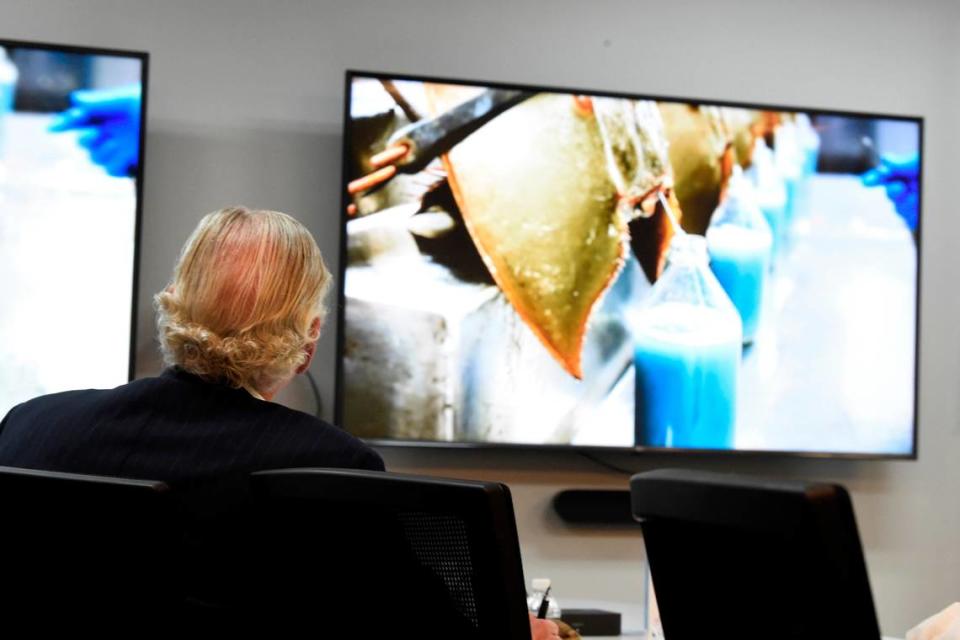
Blaik Keppler, the acting deputy director of the DNR’s marine resources division, told a reporter that the agency does not have the authority to grant a biomedical research license like the one Charles River proposed since it is not established in the state code. Still, the DNR is continuing “to evaluate the interest in protecting horseshoe crabs and the interest in their contribution towards public health and safety,” she said.
A spokesperson for McMaster confirmed over email that the governor was interested in finding “a long-term solution to the harvesting of horseshoe crabs in South Carolina that meets the demand of Charles River Laboratories and their life-saving LAL tests, all while protecting horseshoe crab populations and the delicate ecosystems they’re a part of.”
While touring the company’s Charleston facilities in August shortly before the commercial closure of Cape Romain, McMaster expressed a desire to protect nature but assist Charles River.
“We want to do everything we can to onshore all of these critical operations,” he told the Associated Press.
Charles River declined an interview with The State. Since the partnership had not yet been finalized, the company wouldn’t comment on specifics about it, a spokesperson said.
But a decade before in a horseshoe crab conference in Hong Kong, Charles River had been vocal about its previous commitment to conserving spaces for horseshoe crabs in South Carolina. The slides a Charles River executive presented at the event touted the fact that to maintain a sustainable stock of crabs in the state, “harvesting is prohibited in sensitive conservation easements” in the ACE Basin. Similar protections are less common in China, where the company has also harvested horseshoe crabs to make pharmaceutical products. The Asian horseshoe crab species Charles River and other biomedical companies bled abroad is now endangered.
Even as officials deliberated Charles River’s proposal that could remove sustainability protections the company once claimed to support, Charles River was spending more money to present itself in Charleston as an environmentally conscious partner.
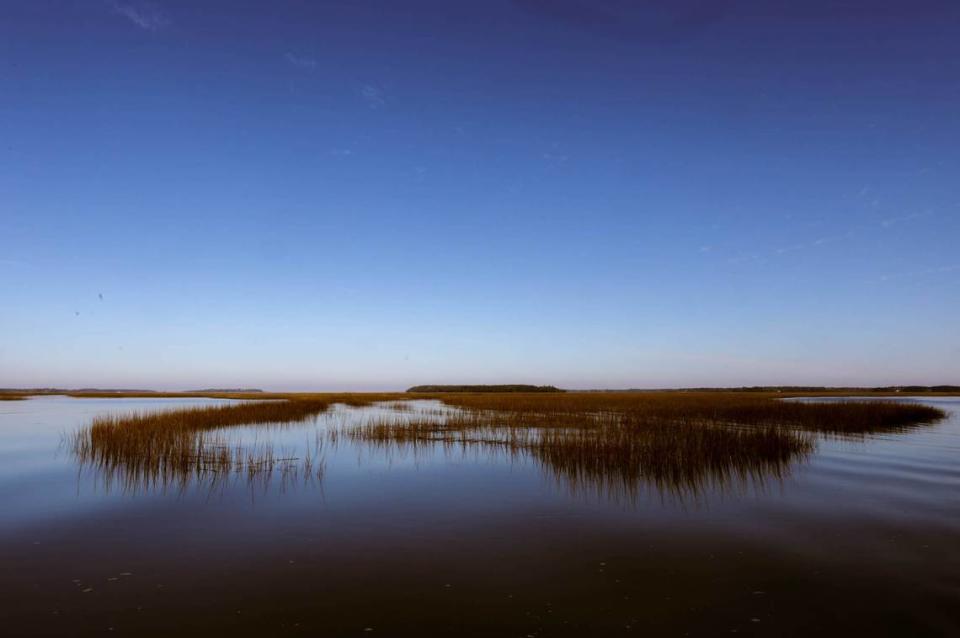
Crab contradictions, on land and sea
Since the 2020 lawsuit showed harvesters had illegally taken horseshoe crabs from Cape Romain and The State reported Charles River had known about the poaching for years but had told the public otherwise, the biomedical company has been busy seeking to purchase affiliations with conservation nonprofits.
It spent $5,000 to sponsor the Conservation Voters of South Carolina’s Green Tie award for the first time and donated $25,000 again to the South Carolina Aquarium in Charleston. The Charles River logo and company talking points are currently displayed multiple times in signs and banners posted around the aquarium’s horseshoe crab exhibit. Then there was their pitch for a partnership to the Charleston Waterkeeper, a nonprofit dedicated to protecting and restoring area waterways.
When meeting with some of the groups, company representatives haven’t always been transparent, documents show.
On Sept. 28, Charles River representatives, including a vice president of the company and the CEO of its public relations firm, sat down with the Coastal Conservation League, a nonprofit founded to preserve Lowcountry coastal communities and wildlife. A senior program director at the League, Emily Cedzo, took notes during the discussion and shared them with The State.
The Charles River reps said only 5% of their horseshoe crabs die after being bled, the notes show. And the fishermen that harvest the crabs for Charles River do so in compliance with the laws and with respect for the animals, the representatives added later. What’s more, the crab population was stable, they said.
That’s not what locals and some scientists have observed.
DNR research has shown 20% of female crabs die within two weeks of being bled by Charles River, not 5%. Other science has indicated the death rate from the biomedical harvest may be higher still, and that the process that has been shown to drain crabs of as much as half of their blood weakens the animals well after they’re bled.
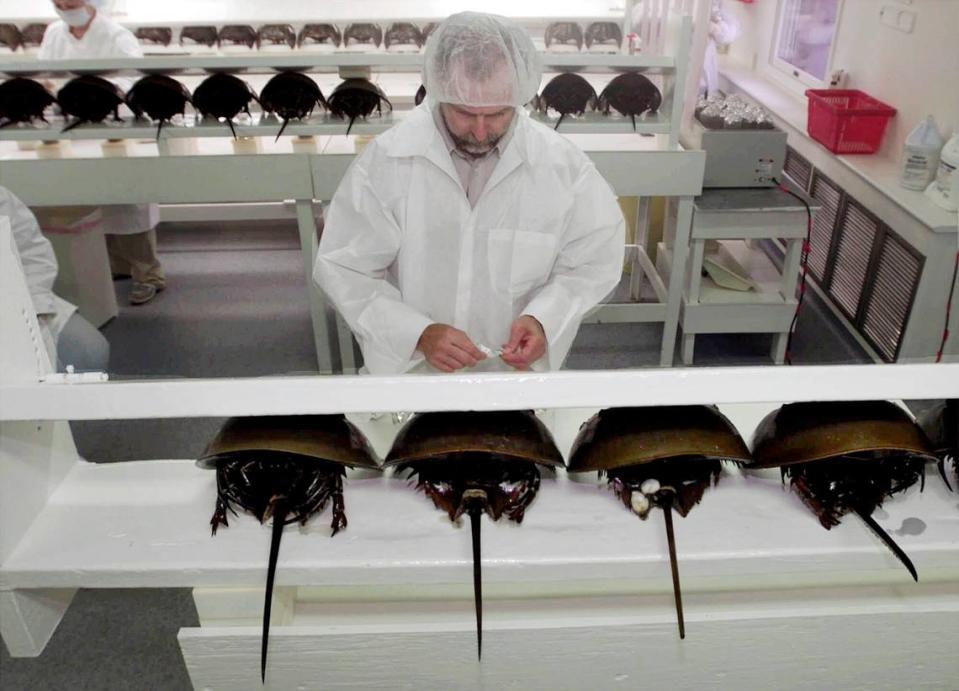
And last year, in the spring of 2021, Captain Meg Hoyle, a former DNR wildlife biologist who now leads tours around the ACE Basin, said she saw four fishermen collecting horseshoe crabs from above the low tide line of Morgan Island—one of the islands in the reserve that is off-limits to fishermen because of a special contract with the state. The island is known for being home to a colony of monkeys used for medical research by scientists at the National Institute of Allergy and Infectious Diseases, and lately, as a target of criticism by politicians and animal rights activists.
“Right where the signs were that said ‘Do Not Enter,’ where the monkeys were, they hopped out of the boat,” Hoyle recalled.
Charles River has paid the DNR more than $16 million to rent the land where the monkeys live. But the lease agreement, obtained in 2020 by The State through an open records act request, shows that the area is only allowed to be used for monkey care. Nobody other than people authorized to do that are allowed on the island without first obtaining written permission, the lease states, and “taking wildlife on the premises is prohibited.”
The way that the fishermen were collecting the crabs was also not humane, the biologist recalled.
“They’re just throwing them down in the hole of the boats, they’re all just crawling over each other,” she said. “I’m sure it’s incredibly stressful for them.”
She’s been seeing more dead crabs around the reserve than she ever has before, said Hoyle. Another former DNR employee said he’s noticed that in places where he used to tag several hundred horseshoe crabs, he’s now happy to see four or five.
Michael Kendrick, who leads the state’s horseshoe crab research at DNR, said that on the handful of beaches he checked last spring while the crabs were spawning, their numbers appeared normal.
Some bird scientists have reported something more worrisome.
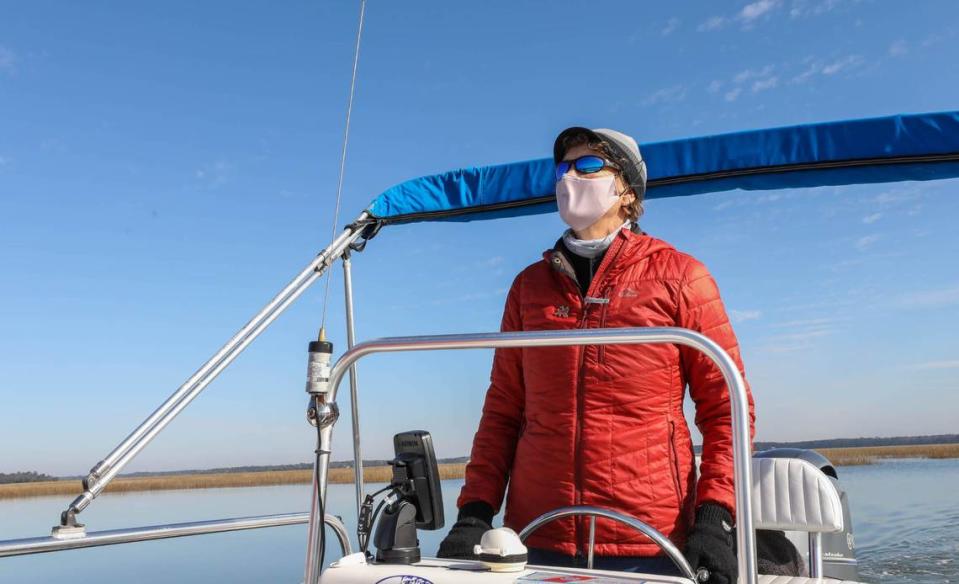
“We may be witnessing a collapse”
Every spring, migratory shorebirds briefly pause their northward journeys to feast on some of the eggs the crabs leave behind after they spawn. But in the past two decades, most of the population of one of the species that migrates the farthest, the threatened red knot, has disappeared. So many have died that the bird now receives federal protection under the Endangered Species Act.
Since 2010, DNR biologists have been researching the birds to find out what they do after they land in the Lowcountry, a stop that marks roughly the halfway point in their annual flight from the bottom of South America to the top of the Arctic Circle. By attaching identifying bands, geolocators and small radio transmitters to the birds, the scientists have been able to follow their flights. That data have suggested two-thirds of the birds may fly directly to the Arctic after they refuel in South Carolina.
“All of this information identifies South Carolina beaches as very important for red knot and other shorebirds’ survival,” Felicia Sanders, a bird biologist for the DNR, has said.
The most nutrient-dense option the red knots can scavenge are horseshoe crab eggs. But the birds are picky—they usually only eat the eggs when there are mounds of them. From what Fletcher Smith observed last year, they haven’t been easily finding that kind of abundance in South Carolina anymore.
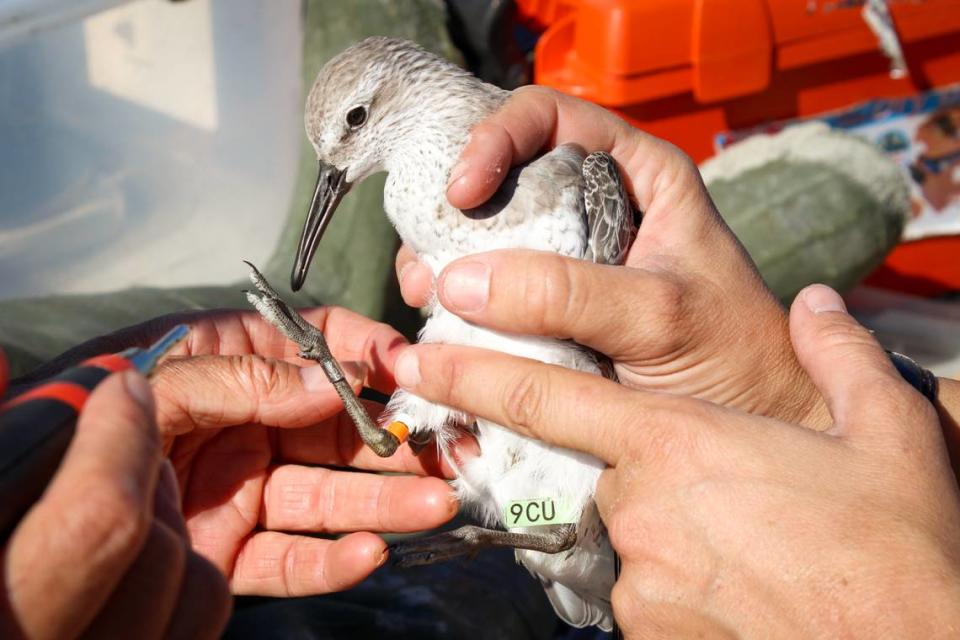
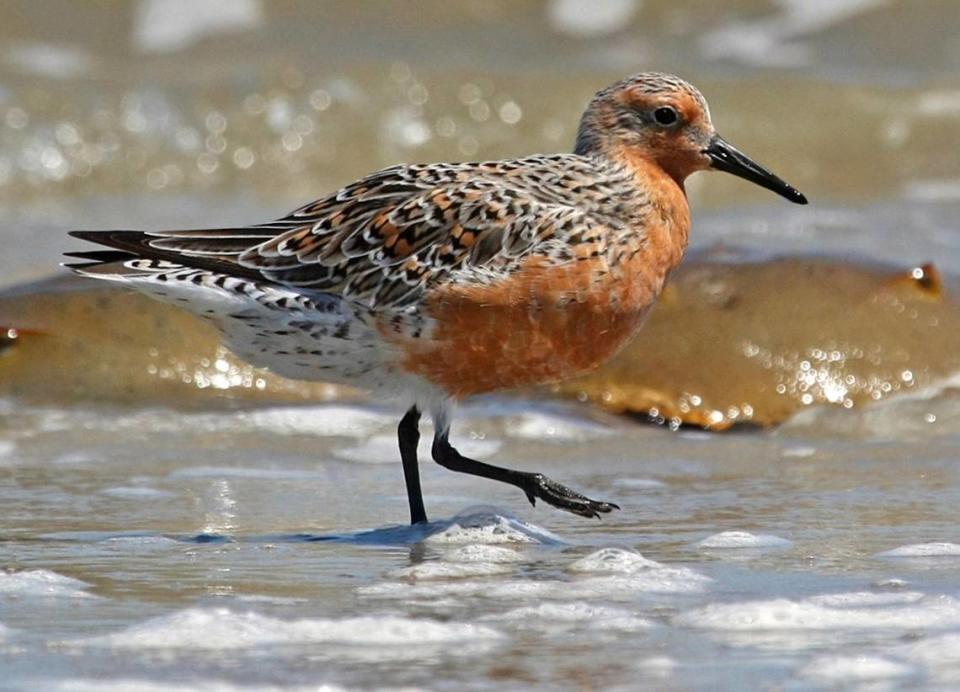
Smith is a biologist at the Georgia Department of Natural Resources who works closely with S.C. scientists to track red knots. In 2019 and 2020, while working near Turtle and Tybee islands close to the border with Georgia, Smith said he saw harvesters for Charles River load up their boats with thousands of crabs from the few spots where masses of the animals were still spawning and shorebirds were stopping.
Then, in the spring of 2021, after two years of harvesting pressure, the crabs didn’t return. Smith estimates he spotted just 5% of the birds he had observed before. Meanwhile, across the border in Georgia where the harvesters didn’t go, spawning proceeded as it had in years prior, he recalled.
“What I’ve been seeing is probably not sustainable,” Smith said. “We may be witnessing a collapse.”
“I do hope that we can protect the few sites that are critical for red knots and all the other shorebirds that utilize crab eggs to get to the Arctic,” he added.
A turning tide, in medicine and South Carolina
The pharmaceutical industry Charles River is a part of is changing. But the company has not changed with it at the same speed as its competitors.
While other biomedical companies have already launched their alternative testing products to the market, Charles River is still working on preparing its own synthetic. In the meantime, though the company has also used horseshoe crab blood from New Jersey to help make its products, representatives have said it needs more blood from South Carolina to keep up with global demand for crab-derived tests.
That has started to become more difficult as some local environmental groups have begun pushing back.
After Cape Romain closed to harvesters for the first time in decades last year, the Charleston Waterkeeper turned down Charles River’s suggestion of a partnership.
“When a company is willing to throw its weight around in that way, that’s just not something we’re going to want to be involved in,” said Andrew Wunderley, the nonprofit’s executive director. “We can be choosy about who we work with and who we don’t.”
Charles River’s September meeting with the Coastal Conservation League did not win over that long-standing conservation group, either.
On Jan. 13, representing the League and nonprofit Defenders of Wildlife, the Southern Environmental Law Center sued Charles River and the DNR in federal court for permitting harvesters to keep crabs in secretive holding ponds before delivering them to Charleston.
The practice allowed in no other state but South Carolina violates the Endangered Species Act, the groups alleged, since it further imperils red knot survival by depriving the birds of the ability to feed on the crabs’ eggs while the animals spawn in captivity. It also harms the crabs themselves, since thousands of them may die each year in the ponds, they said. And for the crabs that do survive the confinement, those animals may suffer more harm after they’re bled and released back into the ocean, research funded in part by the DNR has indicated.
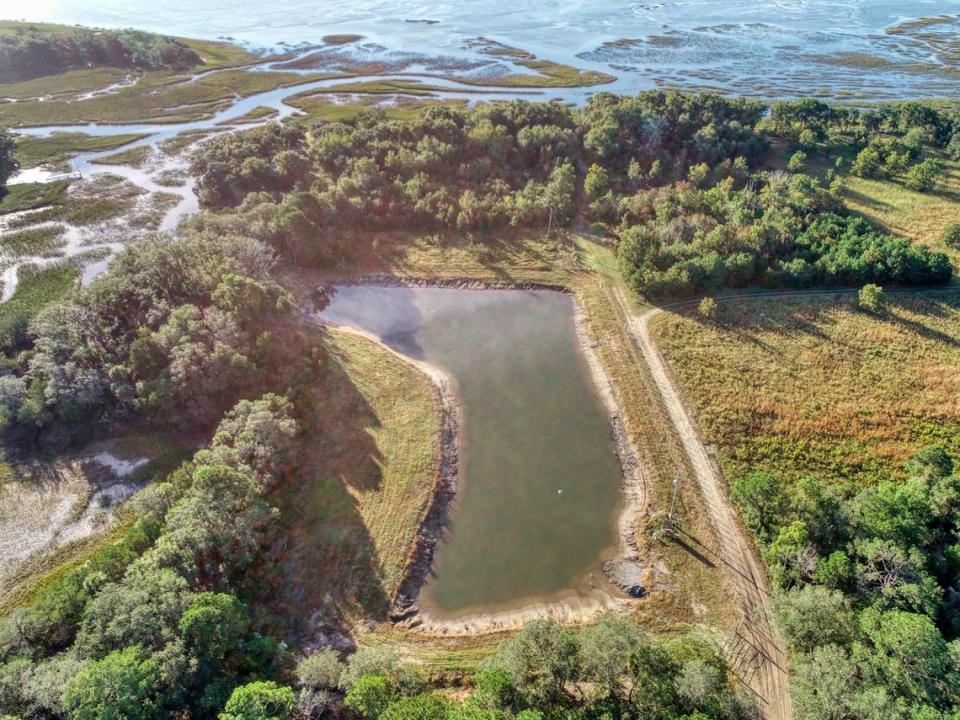
In a provided statement, Charles River referred to the lawsuit as “environmental extremism” and repeated a version of the company’s discredited claim that synthetic alternatives are generally inferior to its horseshoe crab-derived products.
Not far from some of the holding ponds and beside one of the islands currently prohibited to harvesters, on a sunny January morning in the ACE Basin, Captain Hoyle was focused on something else. Gloved hands firm on the wheel of her skiff, she steered the boat to face a pair of dolphins emerging in the distance from a golden marsh as a pelican settled on the sea behind her. Downstream, a bald eagle rested at the tip of a sun-bleached tree.
For a moment, while some of the two animals whose fates would soon be decided by lawyers, lobbyists and lawmakers remained invisible—the crabs hidden deep underwater and the migratory shorebirds still a continent away—the ecosystem they belonged to seemed to show off all that remained at stake.

 Yahoo Movies
Yahoo Movies 
